 Craps is generally the most intimidating game on the casino floor, especially for those who don’t yet understand how to play Craps. The Craps table is often the most active, raucous table in the casino, crowded by bettors and onlookers, cheering (or jeering) the shooter.
Craps is generally the most intimidating game on the casino floor, especially for those who don’t yet understand how to play Craps. The Craps table is often the most active, raucous table in the casino, crowded by bettors and onlookers, cheering (or jeering) the shooter.
What you can find in this Craps guide:
So many casino fans who haven’t bothered to learn the official rules of Craps see the game as being too difficult to learn. There are so many betting options, and many of these bets remain on the table until a specific roll occurs, that it just seems daunting to even try. This is an unfortunate opinion, as Craps is truly the most exciting casino game you’ll ever play, if only you take a moment to learn the rules.
How to play Craps in a nutshell
In Craps, there is one shooter and however many players can gather around the table. The shooter rolls the dice, while the players bet on the outcome. The shooter will continue to control the dice until he “Craps’ out”, then the dice are passed to the next player, who becomes the shooter. If a shooter “Craps’ out” on his first roll, he will be allowed to try again.
Official Craps rules
The rules of Craps are pretty easy to follow once you learn the basic principles of the game. The first part of this page will take you through, step by step, on how the game works. We will be using the most popular bet as an example. Once you learn this bet and understand how it works you can then expand your knowledge by reading the remainder of this page on the individual Craps bets.
It doesn’t matter whether you’re playing Craps at a land based – or online casino; the rules of the game are almost exactly the same. Obviously, the main difference between the two is that when you are playing at a casino you are physically making the bets yourself. Online it only takes a click of the mouse.
The first thing that you should know is that the person rolling the dice is called the shooter. On their first roll of the dice, it is commonly called the come out roll. Each time a new round begins it is called the come out roll; not just when there is a new shooter.
On the come out roll there are two combinations that will make you win and three that will result in a loss. If you roll a 7 or an 11 then it is called a natural and you win. This ends the round and the shooter keeps on rolling. If the shooter rolls a 2, 3 or 12 on the come out roll then this is called Craps. This results in a loss and will also end the round. When the shooter loses the round a new shooter will begin to roll the dice.
By now you are probably thinking to yourself that there are a lot of numbers unaccounted for. The numbers that we haven’t yet discussed make up one of the most interesting parts of the game. It can also be quite confusing for new players. If a 4, 5, 6, 7, 8, 9 or 10 is rolled on the come-out roll it is referred to as establishing the point. Once this point has been established you keep on rolling until you roll that same number again or a 7. If the point number is rolled first then you win. If on the other hand a 7 is rolled first, then you lose. When either of these numbers is rolled the round will finish.
Some important Craps rules to keep in mind
There are a few Craps rules that you should learn and understand before you start betting your hard earned cash on the tables. I will take you through each of the main points you should take into consideration while playing because you will save yourself a lot of money in the long run.
- The Pass Line bet is the safest – The Pass Line bet that we described above is one of the safest bets that you can make in the game of Craps. It only has a house edge of 1.41% so you will be making a solid bet if you wish to play this one.
- Read Craps strategy articles – If you want to learn about how the rest of the bets work in Craps then I recommend you read about them first. Some of the bets in Craps have a house edge of more than 16% so you need to know what you are doing before you hit the tables.
- Play within your bankroll – Never play with money that you cannot afford to lose. The other point to remember here is that you want to be betting an amount that will allow you to take the impact of a large swing. If you are betting too much you will lose your bankroll quickly. You cannot recover from a bad swing if you don’t have any money left.
- Online Craps is different – Even though I said earlier that the rules are almost exactly the same online to the land based casinos; there are some obvious differences. The first one to think about is the fact that the rounds will be finishing a lot faster. You don’t have to wait for all the bets to be placed and for the other players to stop stuffing around before they roll the dice. When you play online all you have to do is make your bet and then roll the dice. When the rounds are flying along you will have to adjust your betting strategy as well as your bankroll management strategy.
You will learn all Craps betting options
Players will place a bet on the Craps table by placing their chips in the corresponding betting areas of the table diagram. If a bet is one, the player is paid accordingly. If a bet is lost, it will be scooped up by the boxman. In the case of multi-roll bets, a bet may be left on the table until it is won or lost.
In Craps there are around about 40 different types of bets. Each of them has varying house edges and dice probabilities. There are smart bets, dumb bets, and sucker bets. We’ll cover the categorical bet types in the remainder of this page. Each bet will be explained in more detail on what the house edge is, how to make the bet, if it is a smart bet and why people make it. Once you have all of this information at your disposal you can make decisions based on correct facts rather than improvisation and guess work.
Line bets offer the best odds
Line bets are very popular bets, offering a very low house edge of 1.40% to 1.41%. Some line bets must be placed before the shooter’s first roll, while others can only be placed after the first roll. These bets will remain on the table until won or lost. Line bets pay 1:1, but have the best odds of winning for the player.
The Line bets are the most popular and smartest bets you can make in Craps. If you see a movie where they are playing Craps, on most occasions they will be betting on the Pass Line. This is the bet that made Craps famous and only has a 1.41% house edge.
Don’t Pass Line and Don’t Come have a lower house edge
The Don’t Pass Line and Don’t Come Bets have a house edge of just 1.40%. The reason why these are not nearly as popular though is because you are betting against the shooter if you make this bet.
In terms of house edges, you can’t do any better than the line bets in Craps. If you were to only learn one group of bets than this is my definite recommendation. If you can master these bets first you have a much better chance of grasping the concepts of the other Craps bets.
The Pass Line bet explained in more detail
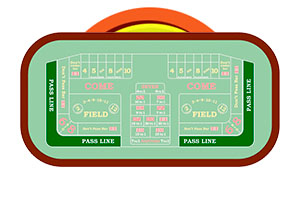 One of the most prominent bets is the Pass Line bet. This is the bet that most players new to Craps will make. On a Craps table, the Pass Line bet is placed precisely in the center of the area labeled “Pass Line”. The placed bet may not touch the borders of the area, as bets placed on the inner border or outside of it are other bets.
One of the most prominent bets is the Pass Line bet. This is the bet that most players new to Craps will make. On a Craps table, the Pass Line bet is placed precisely in the center of the area labeled “Pass Line”. The placed bet may not touch the borders of the area, as bets placed on the inner border or outside of it are other bets.
A Pass Line bet will win when the result of a come out roll makes 7 or 11. The payout for this bet is even money or one to one odds on any Pass Line bet that wins. In this situation, the dice have passed, but if the result of the come out roll makes 2, 3 or 12, then it makes a Craps roll and the Pass Line will lose. The shooter will keep the dice for another attempt.
In case something different is rolled on the come out roll, then that result will become the point. The point is always one of the six so-called box numbers (4, 5, 6, 8, 9, 10).
A Pass Line bet is won (the dice are passed) when the shooter rolls his established point before rolling a 7, but if the shooter rolls a 7 he will be sevened-out (loses) and his turn ends.
On the come out roll, rolls that make 2, 3, 11 or 12 have no impact on the Pass Line bet.
| Wins | Percentage | Payoff |
|---|---|---|
| 1 | 49.293% | 1 in 2.028 |
| 2 | 24.297% | 1 in 4.115 |
| 3 | 11.977% | 1 in 8.349 |
| 4 | 5.903% | 1 in 16.937 |
| 5 | 2.910% | 1 in 34.361 |
| 6 | 1.434% | 1 in 69.708 |
| 7 | .707% | 1 in 141.417 |
| 8 | .348% | 1 in 286.891 |
| 9 | .171% | 1 in 582.013 |
| 10 | – | 1 in 1180 |
| 11 | – | 1 in 2395 |
The opposite bet is the Don’t Pass bet
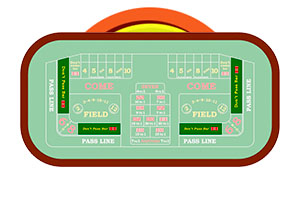 The Don’t Pass bet is the opposite of the Pass Line bet we’ve just talked about. If you bet on the Don’t Pass Line, you’ll bet against the shooter. The Don’t Pass bet is placed in the area labeled “Don’t Pass Bar” which you can see being highlighted in the Craps diagram on the right.
The Don’t Pass bet is the opposite of the Pass Line bet we’ve just talked about. If you bet on the Don’t Pass Line, you’ll bet against the shooter. The Don’t Pass bet is placed in the area labeled “Don’t Pass Bar” which you can see being highlighted in the Craps diagram on the right.
Come Bet
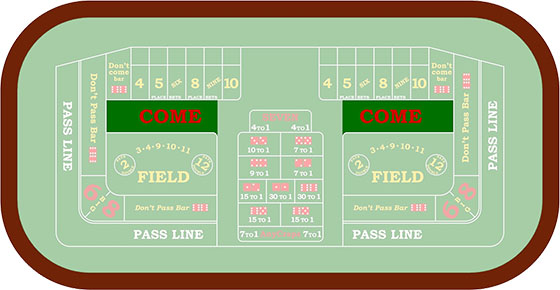
On a Craps table, the Come Bet is placed in the middle of the area labeled “Come”. The Come Bet is comparable to the Pass Line bet, it also pays even money. The difference is that the Come Bet is made after a Pass Line bet. A Pass Line bet can only be made on the come out roll, but if you rather continue with a Pass Line bet after a point is set, then you’re allowed to place your bet in the come area.
The Come Bet is considered a do bet, or a do side bet because you’re betting together with the shooter that he’ll either win (come) or lose (don’t come) his come out roll.
A Come Bet is a so-called contract bet. This means that the bet is under contract until it’s either won or lost, so you’re not allowed to forfeit your bet once it’s made.
Don’t Come Bet
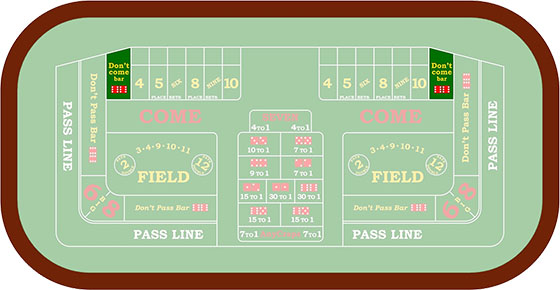
Just like the Come Bet, a Don’t Come Bet must be made after the come out roll. It is placed in the area labeled “Don’t Come Bar”, which you can see in the Craps diagram above.
If you make a Don’t Come Bet, you’re betting against the shooter.
Single Roll bets have great payouts, but a high house edge too
As the name implies, these bets will be won or lost in a single roll of the dice. These are placed in large sections, right in front of the players. Single roll bets have big odds and very attractive payouts, so for the unsuspecting social player it will seem like a good deal, but as such, they have an incredibly high house edge, and are generally termed “sucker bets”. The only way to win a lot of money on single roll bets is to place a wager, win big, and walk away from the table. Unfortunately, this rarely happens.
The house edge on these bets is much larger than the rest of the bets in Craps as well. The best house edge that you can get on the Single Roll bets is 11.1%. This is when you bet 11 will come on the next roll. The house edge goes all the way up to 16.67% on the Any 7 bet. You should avoid making this bet at all costs.
- Yo
- 3 (Ace Deuce)
- 2 or 12 (Hi Lo)
C & E Bet
On a Craps table, the C & E bets are placed near the center of the table layout, in an area where two little circles are joined by a line. Each of the two circles displays a letter, E (Eleven) or C (Craps). Not all Craps layouts have these circles on both of the sides of the center area that contains the pictures of different dice combinations.
A very popular bet in Craps, the one roll bet on number 11, often referred to as the Yo bet, is placed in the circle labeled E that correlates to the position of the particular player at the table.
Another one roll bet can be placed on the circle labeled C. Sometimes this bet is called “Craps Check” or “Any Craps”, described in more detail on the right.
You will win with either the C or the E bet, when the result of a roll makes 2, 3, 11 or 12. Both bets pay different odds depending on the number that is rolled. If the result of a roll makes 2, 3 or 12, the payoff will be 3.5 times your bet. If a number 11 is rolled, the payoff will be 6.5 times your bet.
Generally, players tend to combine the C & E bet, i.e. place both the Craps and Eleven bet.
Any Craps Bet
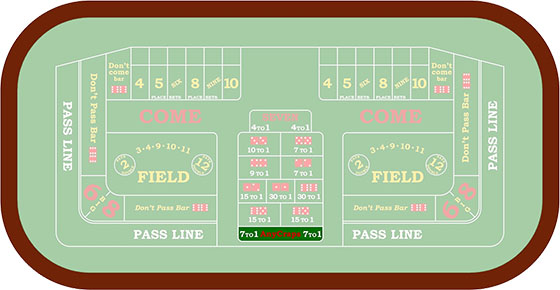
When betting on Any Craps, you’ll bet that the result of the next roll makes Craps (2, 3 or 12). You will get a seven to one (7:1) payoff in case you’ll win, but betting on any Craps is considered a bad investment since the house has a 11.1% edge.
Any Seven Bet
The any seven bet is placed at the top of the center in the area labeled “Seven”. Typically, this area is large and red, that’s why players often refer to this bet as the big red. This Craps bet wins when the shooter rolls a seven and the payoff is four to one (4:1).
It’s not advised to do a single Any Seven bet, as the house has a 16.7% edge. Though, some players tend to make this bet in combination with other type of Craps wagers, for instance the world bet, for insurance.
Field Bet
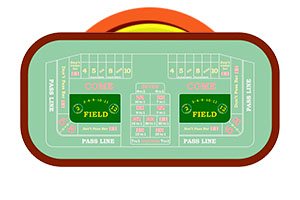 On a Craps table, the Field bet is placed in the area labeled “Field” and can be made at any time. The Field bet is made on many different numbers, this explains the popularity to players new to the game of Craps. Experienced players tend to stay away from the Field bet since the house has a 5.5% edge.
On a Craps table, the Field bet is placed in the area labeled “Field” and can be made at any time. The Field bet is made on many different numbers, this explains the popularity to players new to the game of Craps. Experienced players tend to stay away from the Field bet since the house has a 5.5% edge.
You’ll win when the result of a rolls is 2, 3, 4, 9, 10, 11 or 12, and you’ll lose on any other number rolled. Usually, a winning field bet pays even money (1:1) except when the shooter rolls a two or a twelve. Those numbers pay off double the amount (2:1). On some occasions a twelve pays three to one (3:1).
Horn Bet
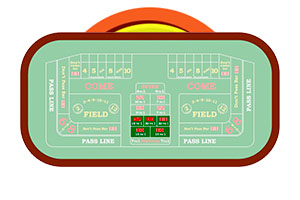 There are four different types of Horn bets:
There are four different types of Horn bets:
- Horn Two
- Horn Three
- Horn Eleven
- Horn Twelve
A Horn bet can be made at any time in between rolls, individually or as a group bet. It will win if the shooter rolls one of the numbers in the horn group (2, 3, 11 or 12). It looses on any other number. In case the shooter rolls a two or a twelve, the payoff will be thirty to one (30:1). In the case of a three or an eleven, the payoff will be fifteen to one (15:1).
Since the house has quite a big advantage, these bets are considered being sucker bets by many experienced Craps players.
World Bet
The World bet, also know as the Whirl bet, is a combination of a Horn bet and a Any Seven bet. All together it’s a group bet for the numbers two, three, eleven and twelve (horn) including number seven (Any Seven). It will be even money when the result of a roll makes a seven, since the money won on the seven (4:1) will be lost on the Horn.
Multi Roll Bets are entertaining
These Craps bets are long-term wagers that remain on the table until won or lost. Multi Roll bets have a relatively low house edge, especially compared to Single Roll bets, but not quite as attractive as Line Bets. The average house edge is about 5% on all Multi Roll bets. The payouts are good enough to make these worthy bets, but are recommended on occasion, not consistently. These bets are the ones that are commonly used in Craps betting strategies. They can be used in conjunction with Line Bets to make it seem as though you are always winning. This is not the case though so be careful if you decide to use one of these systems.
The Multi Roll bets in Craps have what I like to call the middle-range house edge. If you make one of the bets that we have listed below you can expect to have a house edge of around 5%.
Even though the house edge isn’t as small as the Line Bets they do make for great entertainment. You might want to mix up your game a bit when you play online Craps games and players tend to lean towards making these ones for a change of scenery. They offer a change of pace while not giving the casino a huge edge.
While I wouldn’t recommend making these bets all the time I wouldn’t say they are stupid bets. Multi Roll bets are far better than Single Roll bets and are not considered to be sucker bets like them. If you haven’t already made these bets before, they are well worth the try.
Place Bet
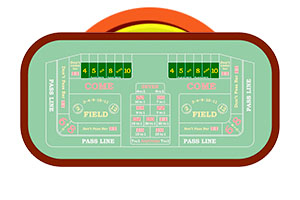 The Place bet is a bet that can be made at any time on the so-called box numbers (4, 5, 6, 8, 9 or 10) highlighted in the Craps diagram on the right. This bet pays more than even money, so it’s considered to be a do bet. You don’t have to wait when you want to make a Place bet, you just pick a number to place and make the bet.
The Place bet is a bet that can be made at any time on the so-called box numbers (4, 5, 6, 8, 9 or 10) highlighted in the Craps diagram on the right. This bet pays more than even money, so it’s considered to be a do bet. You don’t have to wait when you want to make a Place bet, you just pick a number to place and make the bet.
A Place bet will win when the number placed is rolled before a 7. It looses when the Place bet is still on the Craps table when the result of a roll is 7, but there is an exception on the come out roll. If a 7 is made on the come out roll, then a Place bet remains unaffected (neither win, or lose) because Place bets are considered off, or not working in this case. An exception to the exception is that the player has the choice to make his Place bets work on the come out roll, so he’ll win if his placed number is rolled and loses if a 7 is rolled.
An advantage of the place bet is that you can call it on/off, and increase/decrease it, or even remove it whenever you like, as long as it’s between the rolls.
A Place bet its’ limits are within the table’s minimum and maximum bet. Place bets on the 6 or 8 must be made out of a multiple of $6, while Place bets on the other box numbers (4, 5, 9 or 10) must be made out of a multiple of $5.
The following table shows the Place bets payoffs per number, the true odds and the house edge for each Place bet.
| Number | Payoff | True Odds | House Edge |
|---|---|---|---|
| 4 | 9-5 | 2-1 | 6.67% |
| 5 | 7-5 | 3-2 | 4.0% |
| 6 | 7-6 | 6-5 | 1.52% |
| 8 | 7-6 | 6-5 | 1.52% |
| 9 | 7-5 | 3-2 | 4.0% |
| 10 | 9-5 | 2-1 | 6.67% |
Hard Way Bet
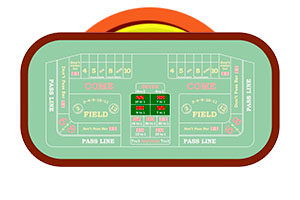
When making a Hard Way bet, you’re betting that the shooter will roll a specific hard way before rolling a 7, or a matching Easy Way which is briefly described on the right. The Hard Way is made when the result of both the dice are identical, often referred to as doubles. Hard Ways can be numbered 4, 6, 8 or 10. For instance, a ten out made out of two fives qualifies as a Hard Way.
Easy Way Bet
The Easy Way bet is the opposite of a Hard Way bet. You’re making this bet on the shooter rolling a specific Easy Way, either number 4, 6, 8 or 10, before rolling a 7.
An Easy Way is made when the result of both the dice vary, i.e. two different values. For instance, a four made out of a three and a one is an Easy Way.
Lay Bet
A Lay bet is the opposite of the Place bet and the Buy bet. The Lay bet is a so-called working bet made against any box number (4, 5, 6, 8, 9 or 10) at any time, even on the come out roll. You’re allowed to pick up your Lay bet whenever you like. The Lay bet pays true odds and a 5% commission will be charged.
A Lay bet will win when a seven is rolled before the number laid against is rolled. On the controversy you’ll lose in case the number you’ve laid against is rolled before a seven, this is called down behind.
For example, if you’ve made a Lay bet against the eight and the next 3 rolls were nine, four, seven, you would have won since the seven was rolled before the number you laid against. However, if the next 3 rolls were nine, four, eight, you would have lost since an eight was rolled before a seven.
Buy Bet
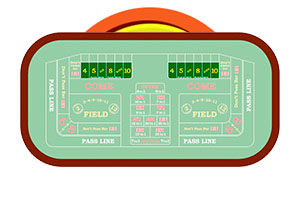 A Buy bet is identical to a Place bet and can be made at any time on the box numbers (4, 5, 6, 8, 9 or 10). The only difference is that you can buy a number instead of placing it. Basically, this means that you pay a 5% commission for buying the correct odds for a number.
A Buy bet is identical to a Place bet and can be made at any time on the box numbers (4, 5, 6, 8, 9 or 10). The only difference is that you can buy a number instead of placing it. Basically, this means that you pay a 5% commission for buying the correct odds for a number.
You’re advised to buy the 5 or 9 in case you’re making a bet of $25 or higher, the 4 or 10 for a bet of $15 or higher, but there’s no need to buy the 6 or 8 since the commission actually gives the house a higher edge.
Big 6 and 8 Bet
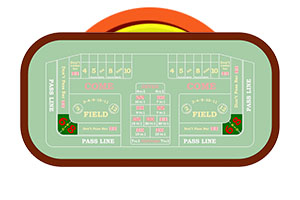 One of the worse bets to make in Craps is the Big 6 and 8, which is located in the inner corner of the Pass Line labeled “Big 6 and 8”. The bet area connects both the Don’t Pass bars.
One of the worse bets to make in Craps is the Big 6 and 8, which is located in the inner corner of the Pass Line labeled “Big 6 and 8”. The bet area connects both the Don’t Pass bars.
The reason why this is such a bad bet is that it pays even money, while you can make an identical bet with better-paying odds by making a Place bet or Buy bet. The Big 6 and 8 is typically avoided by experienced Craps players, and sometimes they aren’t even offered by the casino.
The only exception why you might want to consider making a big 6 and 8 bet is when you’re down to your last few chips, thus not having enough left to make a proper Place bet or Buy bet.
All Craps dice combinations that are possible
If you want to have a better understanding of the way that Craps works then one of the first things you should be doing is learning about probability. The chance of each dice combination being rolled in Craps plays a large role in the way the odds have been designed.
As you can see from the table, the 7 is the combination that is rolled the most in Craps. You will also notice that the numbers that are closest to 7 have a better probability than the ones that don’t.
So why does knowing the probability of each dice combination matter? Well, the simple answer to that question is to reinforce that it is much less likely for a 2 to be rolled than something like an 8.
There are some bets on the table that offer big odds for rolling a combination like the 2. These bets (like the proposition bets) have a large house edge even though it seems like you can win a lot of money. If you can understand these probabilities and relate it to the odds that are given then you can engrain it into your brain to not make these bets.
The more you can understand in the game of Craps the better because in most cases it will save you a lot of money over time. So even if you just have a quick look at the following graph with Craps dice combinations, you should be able to gather some perspective on the probability concept.
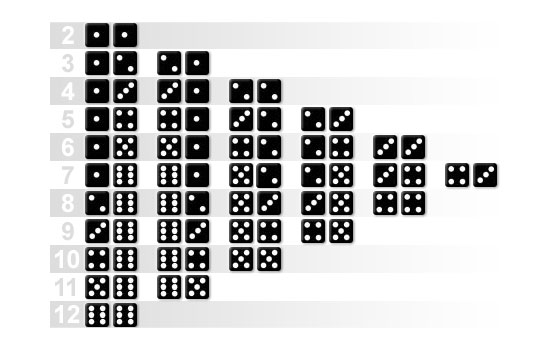
The two dice together can result in a value made out of 36 combinations (2, 3, 4, 5, 6, 7, 8, 9, 10, 11 and 12). The most frequent rolled result is 7 since most combinations (six) produce number 7.
All 36 dice combinations are:
- 6 combinations: number 7
- 5 combinations: numbers 6 and 8
- 4 combinations: numbers 5 and 9
- 3 combinations: numbers 4 and 10
- 2 combinations: numbers 3 and 11
- 1 combinations: numbers 2 and 12